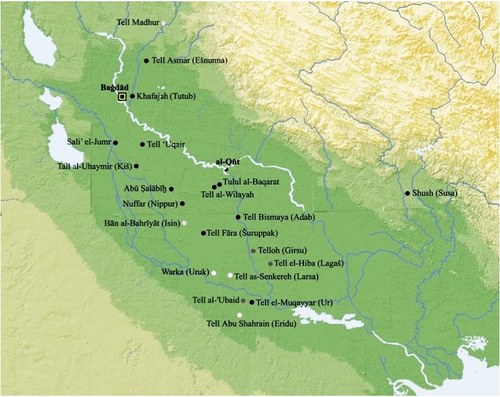EDUU fieldwork in Wasit (precisely in the site of Tulul al Baqarat) was carried out under the supervision of University of Turin (UNITO). UNITO worked in close collaboration with the University of Baghdad.
The modern toponym ‘Tulul al Baqarat’ indicates a series of tells of different size and chronology scattered on an area around 5 kilometres wide. Apart from the nearby Iraqi excavations at Tell al-Wilaya (located about 7 kilometers to the south-west) the area is still little known from the archaeological point of view. The main tell of the Baqarat area was partially excavated by the State Board of Antiquities and Heritage in 2008-2011, in order to stop illicit excavations that seriously damaged the site. The results of these excavations, unfortunately still unpublished, were significant and revealed the presence of a religious complex on the top of the hill, dated to the Neo-Babylonian period (626-539 BC) in its latest phase but with levels that reach the Early Dynastic period (ca. 2900-2300 BC) if not earlier phases.
The EDUU archaeological work on the site and in the area around Tulul al-Baqarat focused on two main sets of operations: extensive excavation activities, and a regional survey around the site. These areas were investigated through stratigraphic excavations and documented through ground and airborne topographic techniques. Furthermore, a regional survey was carried out in the area around the site to better understand the settlement patterns in the region. These operations were combined with study of material culture, cataloging and consolidation of mud-brick architecture.
The end-point of these activities was that of understanding the process of formation of the settlement of Baqarat – possibly to be identified with the ancient city of Kesh, a powerful city-state during the 3rd millenniun BC – and its changes over time, also in relation to the environmental and occupational changes of the surrounding region.
If you wish to have more information, please download the file in the box on the right side of this page.
Go to the "Results" section for information on the outcomes of the fieldwork.


